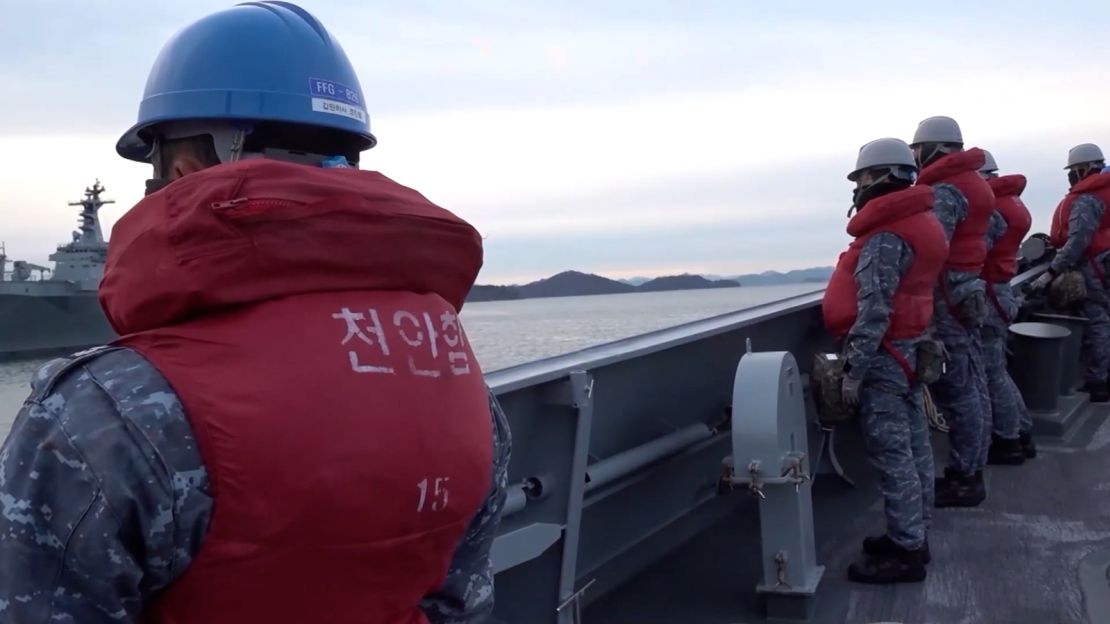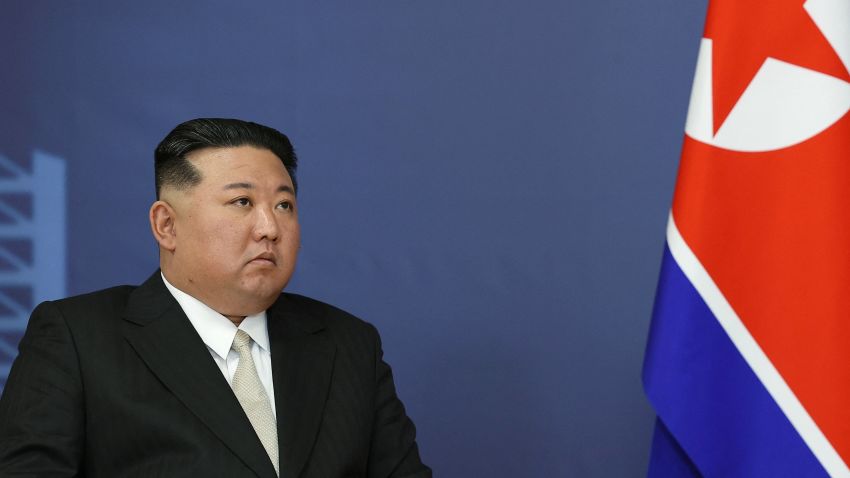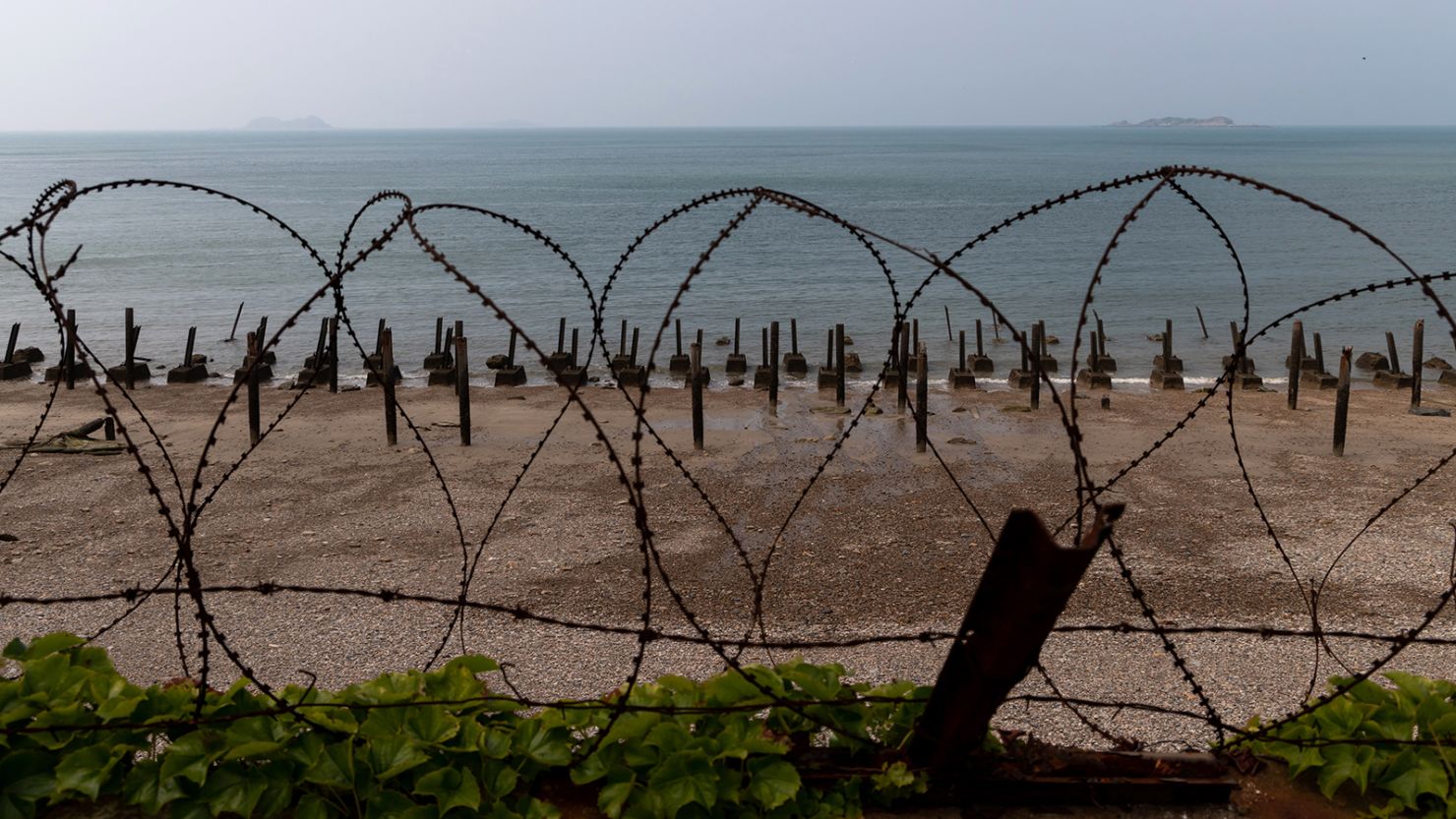South Korea’s military condemned its northern neighbor on Friday after Pyongyang fired artillery rounds that fell within a maritime buffer zone that has long been a flashpoint between the two.
North Korea fired more than 200 rounds between 9 a.m. and 11 a.m off its west coast, near South Korea’s Baengnyeong and Yeonpyeong islands, according to South Korea’s Joint Chiefs of Staff (JCS).
The artillery fell north of the Northern Limit Line (NLL), a disputed de facto border drawn up by the United Nations at the end of the Korean War in 1953.
The incoming rounds did not harm any civilians or military, the JCS added, calling the incident a “provocative act that threatens peace and heightens tension on the Korean Peninsula.”
In response South Korea’s military held its own maritime shooting exercise on Friday afternoon, with the defense ministry saying it was to “respond to North Korea’s provocation of shooting artilleries inside the no-hostile act zone this morning.” There were “no unusual movements” by the North Korean military during the exercise, it said.
Ahead of the exercise, Yeonpyeong residents were ordered to evacuate to nearby shelters and “refrain from doing outdoor activities,” according to a government website message, and a local resident who told CNN they received the same message via text.
Photos from the island showed people gathering near designated shelters, some sitting inside and others milling around outside.

Yeonpyeong, a tiny island that only measures 3 square miles, is home to more than 2,100 people, according to its local office website. Baengnyeong island, about 18 square miles, has more than 4,900 residents.
It is not unprecedented for North Korea to fire shells into the maritime buffer zone but such acts do raise tensions.
The hermit nation resumed firing artillery within the buffer zone after scrapping an inter-Korean military agreement last November, the JCS said. Multiple rounds were also fired in the same area in late 2022.

The military agreement was signed in 2018 as part of efforts with the United States to contain the threat of war on the Korean Peninsula, and broaden the buffer zone between the two Koreas.
But relations have deteriorated since, with Seoul pulling back from the agreement, and both sides stepping up military exercises and weapons tests.
The South Korean military is now working with the US to track related movements, and will take “actions corresponding to North Korea’s provocation,” the JCS said Friday.
“It is not unusual for North Korea to fire artillery into the West Sea during its winter exercises,” said Leif-Eric Easley, a professor at Ewha University in Seoul. “What’s different this year is the two Koreas have recently backed away from a military confidence-building agreement, and Kim Jong Un has publicly disavowed reconciliation and unification with the South.”
On Sunday, North Korean state-run news agency KCNA reported that the hermit nation’s leader Kim Jong Un had said the state will no longer seek reconciliation and reunification with South Korea.
Kim said inter-Korean relations have become “a relationship between two hostile countries and two belligerents at war,” according to the KCNA report. He reportedly added that if the US and South Korea attempt a military confrontation with the North, its “nuclear war deterrent will not hesitate to take serious action.”
Flashpoint maritime border
The Northern Limit Line runs 3 nautical miles from the North Korean coastline and put five islands close to the coast under South Korean control.
North Korea has proposed a different line that would roughly extend the demilitarized zone (DMZ) between the two nations southwest into the Yellow Sea, rather than hug North Korea’s shoreline.
Yeonpyeong Island lies off South Korea’s northwest coast, right by the border with its northern neighbor – and has been the location of hostilities between the two sides before.
In November 2010, Pyongyang launched an attack on the island, killing two marines and two civilians. The attack also injured 15 South Korean soldiers and three civilians, South Korea said. It prompted an island-wide evacuation, and South Korean forces returned fire.
The North blamed the South at the time for provoking that attack by holding an artillery drill in the waters near Yeonpyeong.
The island shelling also came half a year after North Korea torpedoed a South Korean Navy corvette, killing 46 of the 104 sailors aboard, during joint US-South Korea naval exercises. North Korea denied the sinking, which a Seoul-led multinational investigation team concluded had come from a torpedo fired by a North Korean midget submarine.
The 2010 clash was one of the worst flare-ups of violence in years; at the time, the secretary general of the United Nations called North Korea’s attack “one of the gravest incidents since the end of the Korean War.”
The war has technically never ended; an armistice brought hostilities to a halt in 1953 – but there’s never been a peace treaty.
Though diplomats in Seoul and Washington have in recent years discussed an agreement to end the war, those efforts have faltered as tensions in the Korean Peninsula rose again – especially with Pyongyang ramping up its weapons development program and missile testing.





